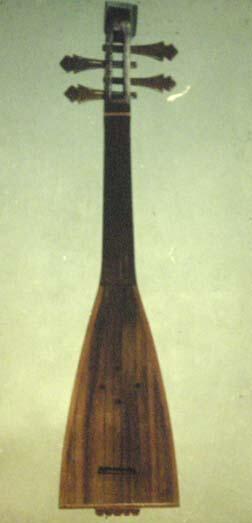The structure and material of kibueh
Qibue is a plucked stringed musical instrument of the Lisu people. In Lisu language, "Qi" means string, and "Buer" is Liguo, which means cylindrical string. Also known as Qi Bo, Qi Bai, Qi Ben, etc. The Han people call it the Lisu Pipa. It is popular in Fugong, Bijiang, Lanping, Lushui, Diqing Tibetan Autonomous Prefecture, Tengchong in Baoshan, and Longling in Dehong Dai and Jingpo Autonomous Prefecture in Yunnan Province.

There are various shapes, and there are significant differences in different regions, and the shape is similar to the pipa of the Dong nationality. The body of the piano is mostly made of a whole piece of locally produced safflower cherry wood, azalea, nanmu, mulberry, red toon, catalpa or other hard wood, and consists of a resonance box, headstock, piano rod, peg, bridge and strings composed of other parts. . Due to the difference in the distribution area, the specifications of the piano are also different in size. The overall length of the piano body is generally 50 cm to 80 cm, but there are also the smallest Qi Buer, whose body is only 30 cm long, and the largest Qi Buer, with a total length of up to 30 centimeters. More than 100 centimeters, the most common is the boue, with a total length of 60 to 70 centimeters.
There are many kinds of resonance boxes, such as oblate, oval, oval, flat pear and flat trapezoid (four-corner arc). Flat gourd, hexagonal or octagonal can also be seen, but there are very few.
The frame of the piano is made of hard miscellaneous wood, and the front is covered with thin boards with softer textures such as paulownia, spruce, cedar, and red pine. The panel is fixed with bamboo nails and glued with pig glue or fish glue. Small circular sound holes arranged in a symmetrical geometric pattern.
The headstocks are mostly flat shovel-shaped, slightly wider at the upper part, curved backwards, with a maximum angle of no more than 45°, and some are in the shape of a square column with a flat top, and some are carved with birds, dragons, tigers, cows, chickens or fish. Other animal head shapes, but less common.
There is a rectangular bottom string groove in the middle, and there are four wooden pegs on both sides (two on the left and right). The length of the piano bar is different, the upper is narrow and the lower is wide, the upper end is provided with a mountain pass, and some are connected with the piano box at the lower end.
The bamboo bridge-shaped bridge is placed in the middle and lower part of the panel. Zhang has four strings. Brown silk, ponytail or gut strings were used at the earliest, and now steel strings or nylon strings are often used. The people of Lisu used local materials to make various kinds of bouer. In Longling, Dehong Prefecture, the bouer was mostly oblate, and the length of the circumference of the piano box was exactly the same as the length of the piano rod.
So here's Qibue, the guitar case with the long body is also big, and the piano body with the small case is also short. In the Mangkuan and Baoshan areas of Baoshan area, the most popular is the Qibue with a 70 cm long piano and an oval box.
 渝公网安备 50010702504639号
渝公网安备 50010702504639号